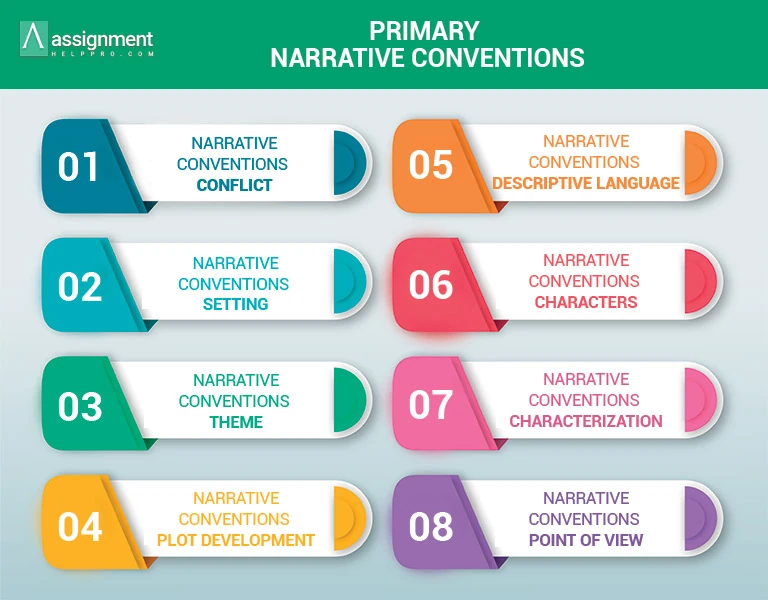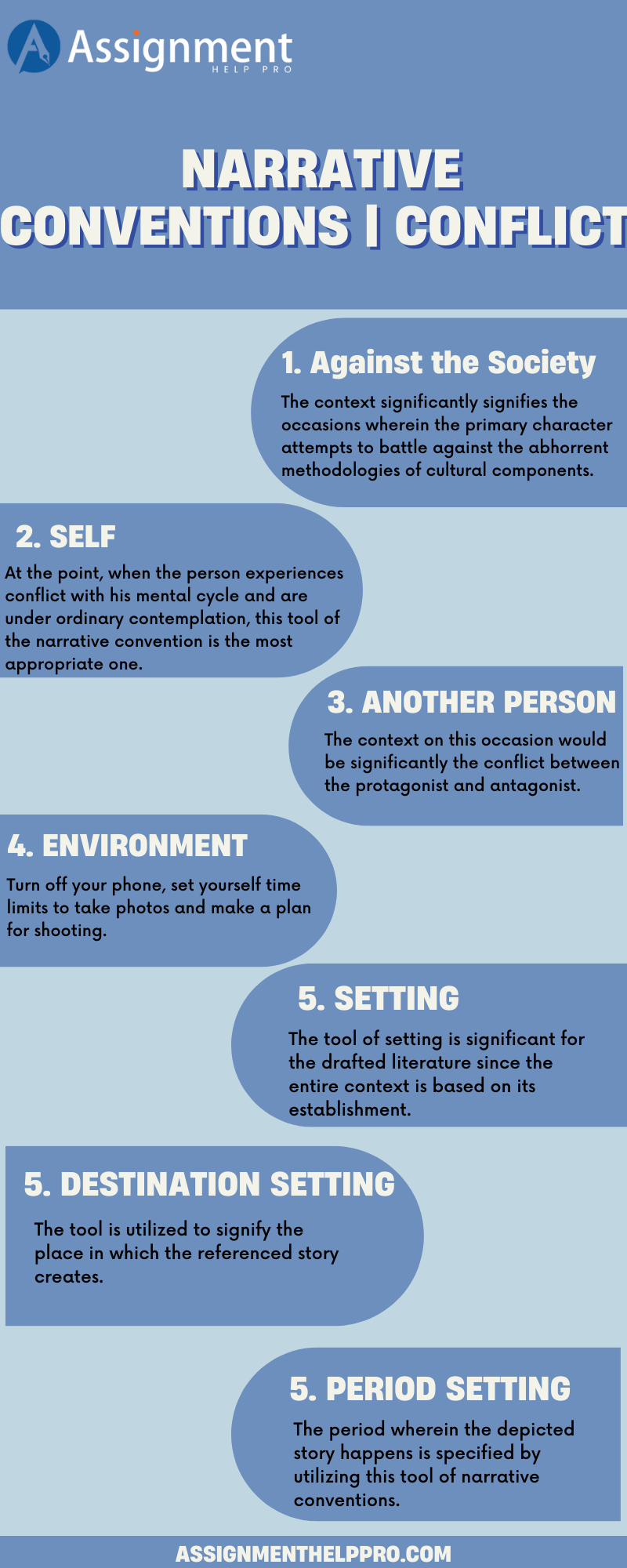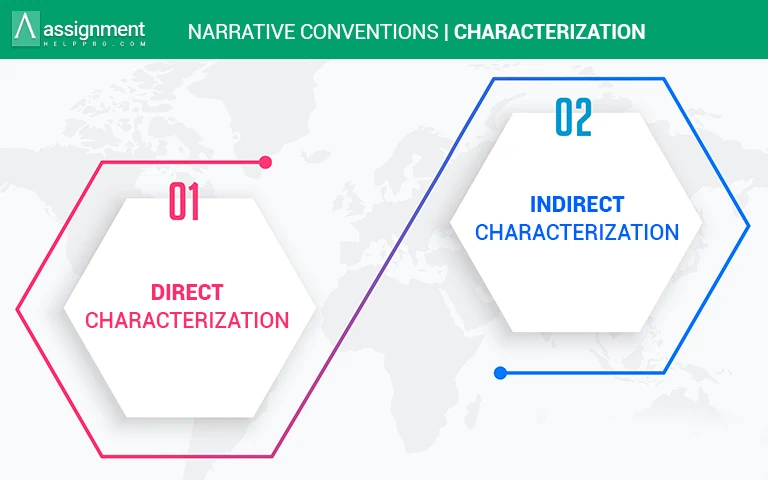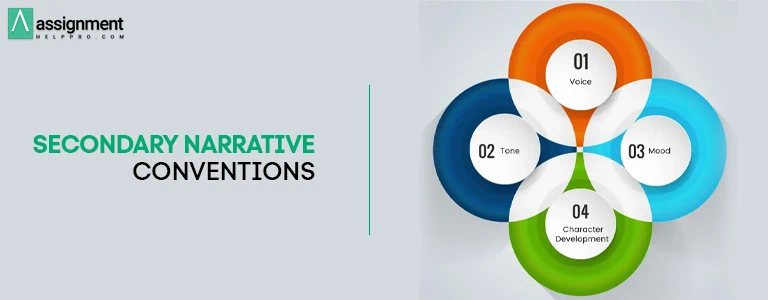Generally, while narrating a story, every author will follow certain conventions and methods to make the content more interesting. One such important technique in English is the narrative conventions. Do you know what narrative conventions are? If you have no idea, then this blog post is for you. Here, you will get to know everything about narrative conventions, their types, and their importance with examples. Continue reading to update your knowledge of narrative conventions.
What are Narrative Conventions?
Narrative Conventions are the important techniques the authors majorly use to build meaning in a story. It is one of the effective tools that help a writer become a master in the art of storytelling. Often, in literature, the inclusion of the narrative convention gives a contextual flow while describing the associated events. Therefore, most literary works like novels, stories, dramas, narratives, poetries, etc. use narrative conventions.
Another significant reason is that using narrative conventions in literary works will help the authors to catch the attention of the readers. Also, narrative writing will help the readers to visualize the described circumstance. Moreover, in English literature, narrative conventions are nothing but literary devices.
Types of Narrative Conventions
Basically, the narrative conventions are categorized as primary and secondary narrative conventions.
The primary narrative conventions make a comprehensive impact over the entire literature whereas secondary narrative conventions will make an impact but not on the entire segment of the literature.
Primary Narrative Conventions
The following is the list of the primary narrative conventions.
Conflict
- Against the Society
- Self
- Another Person
- Environment
Setting
- Destination Setting
- Period Setting
Theme
- Core Theme
- Motifs
- Symbol
Plot Development
- Denouncement
- Exposition
- Falling Tension
- Complication
- Climax
Descriptive Language
- Figurative Language
- Imagery
- Sensory Imagery
Characters
- Antagonist
- Protagonist
Characterization
- Interaction and Relationships
- Appearance
- Thoughts
- Behavior
- Dialogues
Point of View
- First Person
- Second Person
- Third Person
Narrative Conventions | Conflict
So, by utilizing this tool of narrative correspondence, the conflicts between the included characters could be viably shown in the literature.
Now, the following is a list of a portion of the contexts in which the tools of conflict narrative conventions could have been inferred.
Against the Society
- The context significantly signifies the occasions wherein the primary character attempts to battle against the abhorrent methodologies of cultural components.
- Also, the cases like corruption, wrongdoings, moral misappropriation, and so forth are the factors that cause conflict with the character in the literature.
- Moreover, it is the protagonist in the literature who often goes into conflict with society.
- The tool will be helpful in the context when a character compels to consent to the ethical structure set somewhere near society.
Self
- At the point, when the person experiences conflict with his mental cycle and is under ordinary contemplation, this tool of the narrative convention is the most appropriate one.
- Also, the context significantly signifies a circumstance when the character is in a predicament to choose in the middle between good and terrible decisions.
- Moreover, this tool helps the creator show passionate occurrences in a compelling path before the crowd.
Another Person
- The context on this occasion would be significantly the conflict between the protagonist and antagonist.
- Besides, the creator wants to show solid contempt between the two characters.
- The tools will be useful in an unpretentious context like indirect conflicts between the characters.
Environment
- By utilizing this tool of narrative conventions, visualize the effect of disasters on the characters.
- Moreover, the conflict happens significantly because the characters can’t meet their objectives in light of the normal obstructions.
- Well, significant examples of its suggestion followed in old literature like Troy and Odysseus.
Setting
- The tool of setting is significant for the drafted literature since the entire context is based on its establishment.
- Furthermore, variety in setting could even change the whole pitch of the narrating.
- Also, the tool of narrating could be portrayed as the foundation of the literature.
- And, All the components in the story are linked together by setting the narrative conventions.
Destination Setting
- The tool is utilized to signify the place in which the referenced story creates.
- Thus, it is a critical tool in building up the establishment of the story.
- Hence, the destination could be signified by a nation, city, or even a little room.
Period setting
- The period wherein the depicted story happens is specified by utilizing this tool of narrative conventions.
Narrative Conventions | Theme
Center Theme
- It is on the central theme of the literature that the entire portrayal of the literature is based upon.
- Also, the theme of the literature decides the whole tone and style of portrayal.
Motifs
- The components with contextual noticeable quality, which now and again develop in the storyline go under the classification of motifs.
Symbol
- Any factor in the literature which signifies any article, character, or place could be named as a symbol.
- Generally, the writer could change the reader’s viewpoint by suggesting the tool of symbolic narrative conventions.
- They assume a significant job in giving clearness to the theme of the chosen literature.
Narrative Conventions | Plot Development
Exposition
- The underlying area of the narrative could be classified under this division.
- It has been named as the introduction of the drafted literature.
- Moreover, the writer puts forth a decent attempt to present the context, including characters, contained settings, and so on in the area of the exposition.
Complication
- The earnestness of the portrayal increments at the phase of exposition.
- Moreover, the presence of different conflicts presented in the phase of complication.
- The reader would get a mellow thought regarding the occasions which may happen later in this phase of portrayal.
- The phase of the norm gets upsets the characters in this stage.
Climax
- A defining moment is presented in the third phase of the literature.
- Moreover, it is in the climax segment that the reader knows whether the outcomes are agreeable to or against the aims of the protagonist.
Falling Tension
- The final products have already been uncovered by this stage.
- Moreover, the tension between the antagonist and protagonist significantly diminishes in this stage.
- The stage makes the stage for the conclusion of the entire literature.
Denouncement
- Denouncement is the last phase of literature and is regularly called a conclusion.
- Moreover, the writer gives all the eventual outcomes of the occasions described in the previous segment of the literature.
- It relies on the writing style of the writer, which decides if the reader could get an agreeable conclusion in the denouncement segment of the literature.
Narrative Conventions | Descriptive Language
- The tools under descriptive language are utilized by the writers to expand the commitment level of the literature toward the readers.
- The writer attempts to coordinate with the tendency and taste of the reader by inferring the tools of descriptive language in the introduced literature.
- The writer takes a risk to coordinate his viewpoint with the impression of the reader by utilizing descriptive language tools.
Figurative Language
- The tools utilized to introduce concealed importance as opposed to strict significance go under the classification of figurative language.
- Moreover, the utilization of figurative language carries quality to the literature.
- It guarantees the commitment of the reader to the introduced literature since an impressive accentuation is expected to comprehend the figurative language.
- The rich utilization of exaggeration, analogy, personification, allegory, and so on ought to use by the writer to infer the figurative language.
Also read: What is Emotive Language? Definition, Example, Use, and Benefits
Imagery
- The tool of imagery is utilized by the writer to make a visual picture of a particular scene before the crowd.
- It is one of the valuable narrative conventions tools which go under the classification of descriptive language.
Sensory Imagery
- The creator attempts to summon the insight and sentiments of the crowd.
Narrative Conventions | Characters
- The terms used to portray the characters referenced in the storyline of the literature goes under the classification of characterization.
- It is the antagonist and the protagonist in the storyline which is normally directed for the characterization in the literature.
Antagonist
- The negative character or the scoundrel is viewed as an antagonist in the literature.
- Moreover, the inclinations and strategy would be inverse to that of the protagonist.
- The entire storyline observes the clashes between the antagonist and the protagonist.
- The writer attempts to make a negative picture of the antagonist before the crowd so a view of sickening for the character could be made among the crowd.
Protagonist
- The protagonist drives the storyline, and it is around this character the entire context rotates around.
- It is the exercises and the choices made by the protagonist that prompts the different headways in the plot.
Narrative Conventions | Characterization
- The writer needs to manufacture a connection between the characters and the crowd.
- For this, the creator utilizes the tool of characterization that could be additionally classified into: –
Direct Characterization
The characters in the storyline are directly presented by the writer before the readers.
Indirect Characterization
The introduction of the characters before the crowd has done in an extremely unpretentious manner, and the crowd needs to infer their recognition of it.
Narrative Conventions | Interaction and relationship
- The personality and the demeanor of the character are controlled by breaking down the relations kept up with different characters in the storyline.
Appearance
- The appearance of the character could give a ton of insights into their personality.
- Moreover, the components identified with appearances like body language, dress, style of writing, and so forth would give a high lucidity in regard to the foundation of the characters.
Thoughts
- The instabilities, convictions, discernment, and so on of the character would give a solid picture of the crowd.
Conduct
- The conduct of the character is similarly significant to comprehend the point of view held by them.
- Moreover, the normal conduct of the character uncovers a ton about the environment from where the character originates from.
Discoursed
- The subtleties like the environment where the character was raised, local land, family foundation, and so on could be gotten by examining the dialogues.
Narrative Conventions | Point of View
- The portrayal of the storyline should be possible by the creator from three different points of view, first-person, second-person, and third-person.
First-person
- The entire storyline has described by the protagonist in this methodology.
- The first-person approach would empower the writer to give definite data for the perspective, inclinations, family foundation, and so on before the crowd.
- But, the data given by this methodology might be somewhat one-sided towards the justifications of the protagonist.
- The utilization of first-person pronouns and intelligent clarification could have been found in this methodology.
Second person
- The creator expects himself to the steady nearness on each event of the storyline.
- The partiality consequently could have been kept away from by the creator in this style of portrayal.
Third Person
- The methodology is fundamentally the same as that of the second-person portrayal, but the storyteller is omniscient in this case.
- The storyteller knows each character’s psychological cycle and can give an emotional justification from every point of view.
- Third-person pronouns like they, she, he, and so forth could be generally found in the third-person point of view.
Secondary Narrative Conventions
The following is the list of secondary narrative conventions.
- Tone
- Character Development
- Mood
- Voice
Tone
- The tone of a particular piece of literature has influenced the creators’ style.
- Any tone the creators chose would be to their advantage.
- It could be quiet, sentimental, convincing, etc., depending on the case’s context and the character requirements.
- The perspective of the ongoing person in the plot would make a colossal impact on the tone of the depiction.
- When the storyteller’s perspective shifts, there will be a heaviness in tone.
- While the third person would be more neutral and subdued when portraying a similar example, the first person could have a powerful tone on a particular occasion.
- The audience would be drawn in by scenes if the appropriate tone is used.
Character Development
- The audience will be committed if the character has been developed properly and methodically.
- Without character development, the plot as a whole ceases to be alive.
- For a story play that requires a lot of activity and dramatization, it is pointless to remember boring characters.
Mood
- The mental state that the audience receives from the portrayal is referred to as the mood.
- Frequently, readers misinterpret mood in relation to the writing’s tone.
- The effective use of descriptive language tools like imagery has limited the mood of artistic work.
Voice
- The artwork that the audience grasps has the same inherent voice as its creators.
- If the speaker’s voice fails to reach the audience, the whole point of introducing the literature will be lost.
- The literature referred to as its voice conveys the central theme, belief systems, and other messages to the audience.
Wrapping Up
We hope you have now gained a clear understanding of the different types of narrative conventions and their importance. In case, you have any doubt regarding this subject or if you need an expert to compose an engaging story by including the elements of the narrative convention, then contact us immediately. We have numerous subject experts on our platform to offer you high-quality online assignment help at affordable prices. Especially, with the support of our experts, you can also update your knowledge of narrative conventions and include that effectively in your content to make your work stand unique in the crowd.
1. What are the 6 narrative conventions?
The 6 narrative conventions are character, plot, point of view, setting, style, and theme. Here, it needs mention that these are the core elements of any type of fictional narrative.
2. What are the 4 narrative conventions?
4 narrative conventions refer to the various methods of telling a story that an author uses. These are first-person, second-person, third-person limited, and third-person omniscient. Among these, first-person narrative and third-person omniscient narratives are mostly found in the literature of any language.
3. What are narrative conventions examples?
Narrative conventions are the tools and techniques an author uses in the piece. Character, plot, point of view, setting, style, and theme are examples of narrative conventions. For example, the characters of the story, the way the incidents take place in the story, the narrator’s viewpoint, the location of the incidents, the way of narration, and the theme of the story are examples here.
4. What are narrative conventions?
Character, plot, point of view, setting, style, and theme are narrative conventions. These are the techniques that an author uses in the story to make it more relevant and reach more readers.







